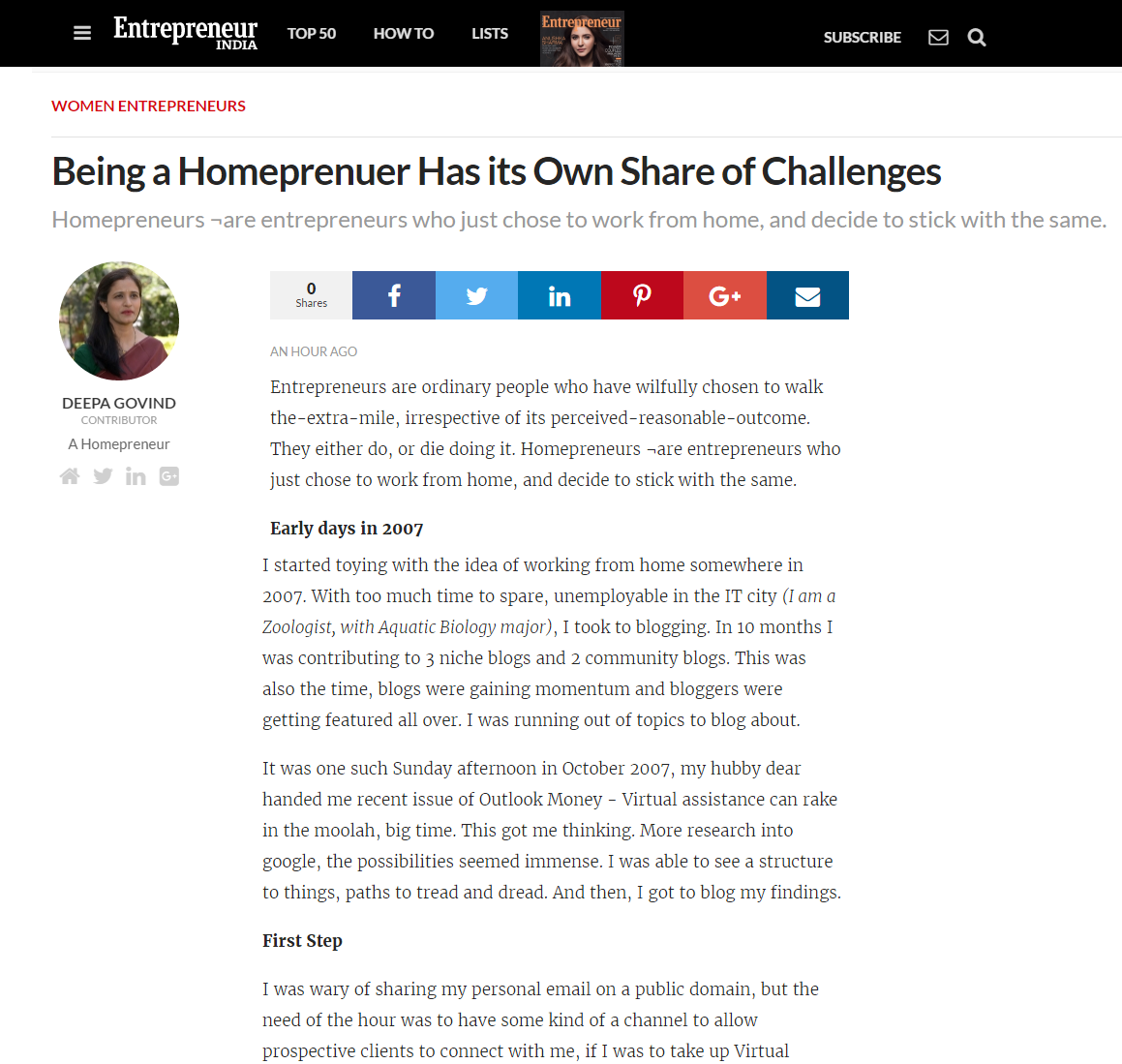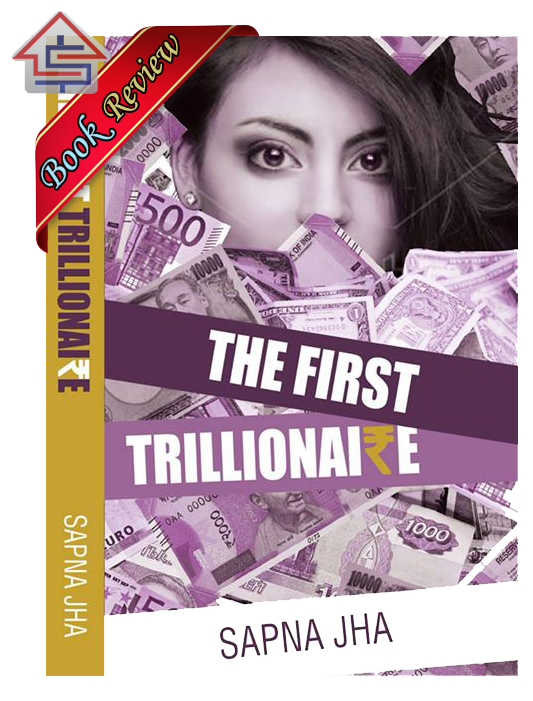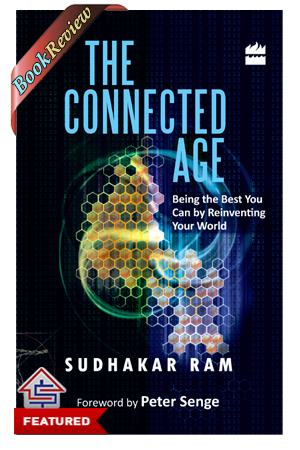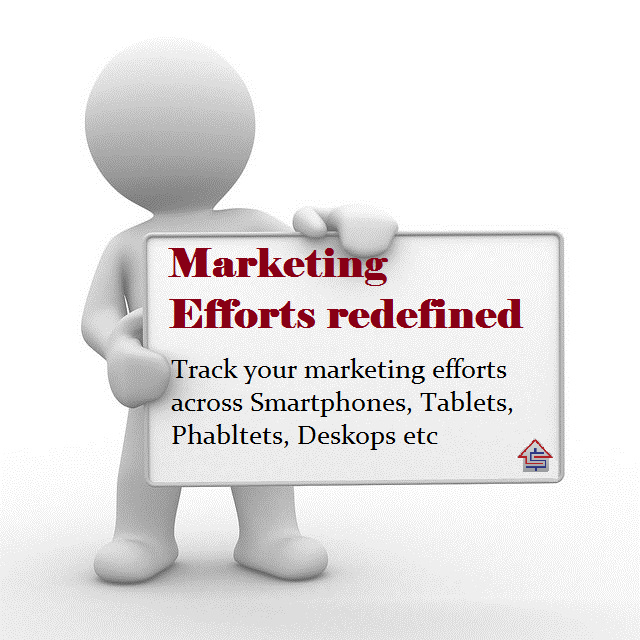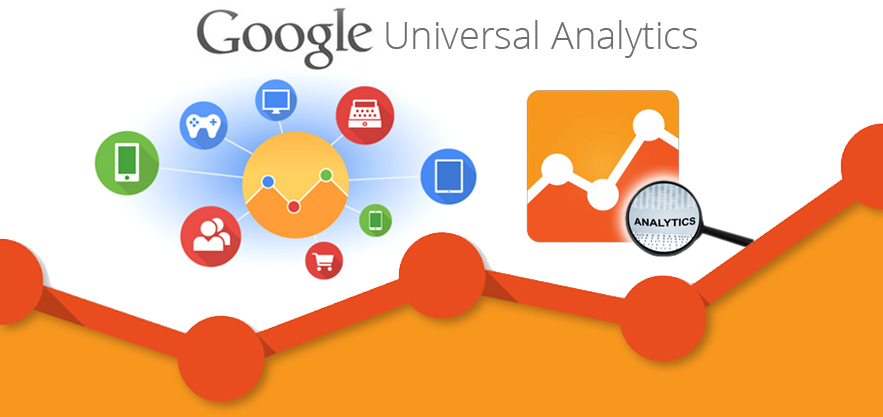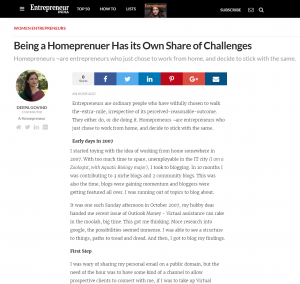 An invitation of a lifetime.
An invitation of a lifetime.
I would read Entreprenuer on the stands, and make mental note of the contibutor’s profile that appears as a small box at the end of each article, and feel very very jelous about them. There is something oh-so-perfect about these authors, that their write up has made to the print edition of the most acclaimed Entrepreneur Magazine.
And the, I sigh !!!
But, last week, I was in for a surprise.
Thanks for Team Zoho, They had an invitation for me, on behalf of Entreprenuer.com, and I just grabbed it on all fours. For those who know me, this is indeed a rewind. But. for those who don’t, hope to kindle your sleeping spark, so that you too can find your mark on the things that you, and only you do best.Read More
Book Review – The First Trillionaire by Sapna Jha
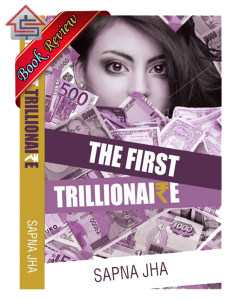
The title had me confused with J.Lowe’s “The World’s First Trillionaire”, which apparently deals with a journalist’s inquisitiveness on the ways and means used by the protagonist to become a Trillionaire in his own right. I now have this in my wish list, to read for later.
That said, Ms.Sapna Jha’s debut work, “The First Trillionaire” is a refreshing read.. There is lot of emphasis on hard-work, dedication to duty, commitment to family etc. But, the unrelenting & blind faith, on the grand-design at the hands of Lord Supreme (Ma Dugra) tops them all. Although a bit cliché’d for many, such blind faith have been a life-saver to those who have passed though the darkest hours of their lives. It’s a choice to believe in (or not to). Let us keep it that way.
Synopsis
The official synopsis is available here.
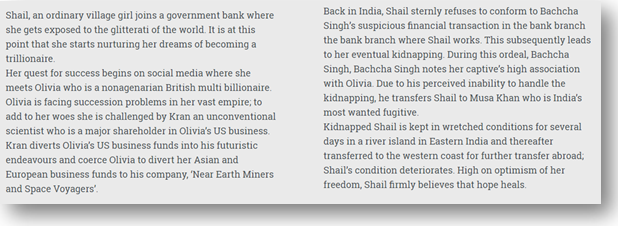
In India, a single mother raises a girl child in a rural village, by home-schooling with help of the local schoolmaster. The child grows up to an intelligent woman who knows how to use the knowledge she has gained over her growing years, and also strongly carries forward her mother’s unrelenting faith on Goddess VaishnoDevi of Katra. Born to poverty, none to the family except for mother-daughter duo, reunion with the extended family once lost ,pre-ordained to inherit unprecendented wealth is this child’s destiny taking shape.
Now, The Review
The language is simple, with easy to understand words, and easy to follow flow of events. As a translated version, this book still retains some dialouges from the vernacular language to keep upto the spirit of the characters.
The author has made a deliberate choice to take us though the memory lane … walking with the characters. The timeline spans from 1967 to 2016, for the reader to relate to the present day events, its history, and the repercussions to come in the near predictable future to those involved in these events.Braiding time-strands, with oldest character being 94 yrs, and youngest at 25 yrs, is no ordinary feat. That is three generations in a family, and a league of few other rustic, bureaucratic & mercenary characters in between. Each one’s journey until present time is essential to understand the precedence and purpose of present day events.
While this is a welcome element for seasoned readers, it can get a bit overwhelming for those who are just picking up on the habit of reading for pleasure. For those of you, advice scanning the pages to get the big picture on your first read. Should you feel satisfied after completing the book, come back and read again to understand how the time-lines merge. I promise, you will enjoy the 2nd read better.
I have a feeling that the nuances of banking policies and attention to detail on Science, space research programs etc in the plot has a lot to do with Alok Jha (translator , author’s husband) association with the banking sector and his association with science. Kudos, great teamwork. You both sure make a power couple.
The Book’s Official Motion Trailer
https://www.youtube.com/watch?v=FNsNMmNqlnc&t=8s
Just one thing that nags me about this trailer (after reading the paperback version)..is, for a girl coming form a rather non-descript village in India, the promo trailer shows the protagonist as highly fashionable girl with nail art, selfie-pout, spaghetti strap tops, and a fake accent.
It is only until a certain point in the storyline, we can credit wisdom and intelligence to the protagonist. After that, most of the events that come together are largely pre-ordained, by way of coincidence. True to her character, the protagonist is thankful to her favourite deity, Goddess Vaishnodevi of Katra. In the end, All is well.
I understand from the cover, that this is a translated version (Thank you, Alok ji). Having read this, I would like to read the original book as well (assuming its Hindi). If its Gujarati or Bojpuri, I’d rather stick with the translation. This is just the quirky-me. Even when there are remakes of the same movie in multiple languages, I make it a point to watch them all. Here is a movie remade in 4 languages, and I watched then all..
Rating : 5 stars
I wouldn’t go to the extent of calling this as an inspirational-read. Instead, would say that this makes an interesting tea-time read, or a kind of book you would want to hold on to while travelling (esp via train / bus). Takes your thoughts away from the humdrum of life, and leaves you with a satisfaction of having spent the time reading a good crime-mystery-thriller.
Book Review – The Connected Age by Sudhakar Ram
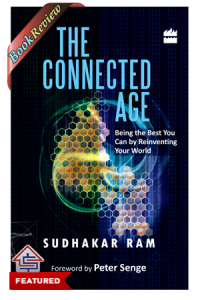 Book reviews are fun to do, especially when you love to read, and love what you read. These were my thoughts exactly when I received my copy of Mr.Sudhakar Ram’s “Connected Age”.
Book reviews are fun to do, especially when you love to read, and love what you read. These were my thoughts exactly when I received my copy of Mr.Sudhakar Ram’s “Connected Age”.
Little did i know at that time, I am in for a reading-shock of mammoth proportions.
The Title : The Connected Age
The title leads to the assumption that this book is about technology, internet of things, Social media connects etc etc.Well, you are correct to assume so. Mr.Ram, being a technical person, it is only natural to have technical jargons as part of his everyday vocabulary.. However, not on the context of “Technology” of things…. but.. more so on the “Philosophy” of being….
The Tagline : Being The Best You Can, by Reinventing Your World
Isn’t this THE typical “philosophy” pitch?..Be the best, Bring out the best, Reinvent yourself etc etc. Well well.. not wrong either. Book tells exactly what it says .. but not the way we are used to hearing them from God-(wo)men, and Self-styled Gurus. Just don’t let that cloud your perception. Keep an open mind.
The Synopsis
The Published version of synopsis here – @ The New Constructs, Mr.Sudhakar Ram’s blog.
My version of the Synopsis
As much as we would stop to smell the roses, the stench of the nearby sewage is impossible to ignore. Same applies to the ecosystem (a.k.a THE Earth) we live in.
As much as we wonder over the advances in technology that has enabled us to lead a (perceived) better lifestyle, we fail to ponder over the perils of continued use of the same technologies.
Just as energy can neither be created, nor destroyed, but can only be converted from one form to another. However, in our case, we humans since the 21st century have been converting THE Earth’s resources from one form to another, with unforeseen & undesired consequences (… eg..think “..Plastic…”).
Now is the time, to Sit Up, Reflect on (consequences of the) past actions, Act up (to right the wrong) at an individual level (… think… Ban Plastic..),
Diligent and socially conscious individuals can be our crusaders of change for better, by starting at grassroot level, ie.. personal – professional – community level – corporate level – Villages / Panchayats / Municipality level collaborative governance – state level – national level – and last but not the least, bring change at a Global Level.
Now, The Review
Short Review: This book is for the tech savvy-philosophers, and none otherwise.
Long Review:
There are 2 types of readers. Those who read for pleasure & those who read for purpose.In addition to the generic nature of the book, one is able to enjoy the reading experience solely based on the individual’s know-how of the things addressed in the book. Such a book is too serious to be used for reading-pleasure, and too light to be considered for a user-manual. The Connected Age, is one such book.
Philosophy has a strange way of sneaking into our thoughts. It wedges within, by the proverbial “foot in the door” technique when we are either disappointed, or hopeless, or both.
I believe, Philosophy (for the common man) is our psyche’s defence mechanism to deal with rejection. As much as despair pins us down, hope lets us soar.
“The Connected Age” is not for light reading of any sort. Heavy use of technical terms is an outright put off to a casual reader glancing through the book on a shop window. However, this doesn’t undermine the philosophy shared by Mr.Ram in any way. His views and visions are profound, except that the vocabulary is a bit too intense.
As we take the walk with Mr.Sudhakar Ram, we begin to accept our recklessness at a rather personal level at utilising the Earth’s resources, and abusing our privileges. After this guilt – trip, Mr.Ram brings in his mentoring expertise to motivate the reader to be the change one wants to be Further to this, he takes huge a leap of faith, and in wishful thinking, expects every citizen to be THE Ideal Reader who would act only in the correct manner, and settle for nothing less..
Sadly, Neither we, ourselves, nor the personalities we encounter match up to our Ideal Connected-Age Reader. But then, its the little efforts that count to make up the bigger change. So, i guess there is a little bit of everything for every one in this book.
My Rating:
If you can read past the first chapter without reaching for google on your smartphone, then this is a Must Read.
Book Review – "Back to Basics – Transforming Life" by Murali Nandula & Anuja Surve
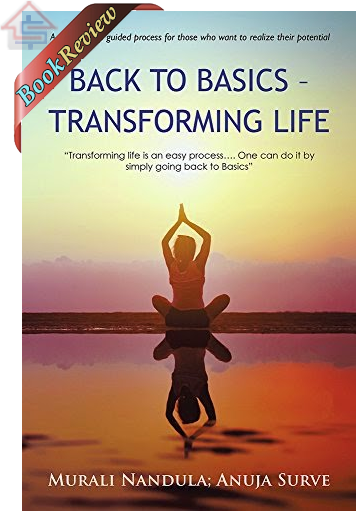 There comes a time in everyone’s life where we tend to glide towards being receptive to our inner voice. Some do it early, some a bit later. But, nevertheless the universe makes sure that we heed to our inner voice at least once in our lifetime.
There comes a time in everyone’s life where we tend to glide towards being receptive to our inner voice. Some do it early, some a bit later. But, nevertheless the universe makes sure that we heed to our inner voice at least once in our lifetime.
Popular media addresses such introspections as “stop to smell the roses” or “take stock of your life goals”. Those who have been-there-done-that on this self evaluating exercise will confirm that, the revelations have been life changing.
The author projects a project-management-approach to ‘a’ life. Should we consider every living being as a project, then the very life of the being is a project in progress. Even though he does not apply project management principles per se, you tend to see some striking similarities.
Self confessed reading enthusiast, and having read innumerable religious, philosophical and motivational texts, in the traditional and modern order, the author begins with the belief that the principles that govern our life can be classified under 6 major heads.
- Design and purpose
- Order and rhythm
- Abundance
- Freedom
- Oneness
- Responsibility
Murali Nandula also brings forth the stages of development (in the biological sense) such as the infancy, toddlerhood, adolescence, young adults, middle age, and the senior years. It appears that the intent was to philosophically attune the reader’s mindset with the traits specific to these growing stages. However, it gets a bit too literal and does not generate the desired effect. The anecdotes still make a great read.
After reading the book from cover to cover, I was left with an overwhelming feeling of having read a compiled version of an assumingly large volume of self-introspection-epic-saga. The references to the works of other philosophers (Maslow, Blanchard, Miller, Caslow, Muller & popular religion) overshadow the conclusive thoughts of the author. This is bad, because we don’t get to listen to the author’s voice, instead just popular quotes resonating into our minds. This is good, because very few of us can afford the luxury of time to quench the innate desire to read voraciously, while taking part in the rat-race that we call profession / business.
That said, I personally see an underlying message in the way Murali Nandula has gone about structuring this book. The way we live today, is but the compilation of experiences until yesterday, with the lessons for tomorrow. By quoting popular beliefs, cultures, religions and creations of other authors, the author emphasizes our innate urge to look back into our experiences of the past, derive lessons for tomorrow and act for today.
In a nutshell, the book, “Back to Basics – Transforming Life” by Murali Nandula & Anuja Surve gives a step by step DIY approach (with worksheets at the end of every chapter) to self-evaluation, to those in the fast lane, who cannot afford the luxury of time to read multiple authors on the same subject. After all, fast food is food too; and for some of us, this is survival-food. In that order, this book is a good start for time-strapped philosophy enthusiasts.
Cross Device Reporting
 Marketing and Advertising are an ever-evolving realm. What works today may not be so useful tomorrow, and what works for Facebook, may be rather detrimental when used with LinkeIN. The point being, Marketing Experts (the strategists and the analysts) have to be on the constant look out for new techniques that measure their efforts, or else risk losing the early adopter advantage to a fellow competitor.
Marketing and Advertising are an ever-evolving realm. What works today may not be so useful tomorrow, and what works for Facebook, may be rather detrimental when used with LinkeIN. The point being, Marketing Experts (the strategists and the analysts) have to be on the constant look out for new techniques that measure their efforts, or else risk losing the early adopter advantage to a fellow competitor.
Here is a piece written about cross device reporting, and how marketing efforts get redefined – Client Content
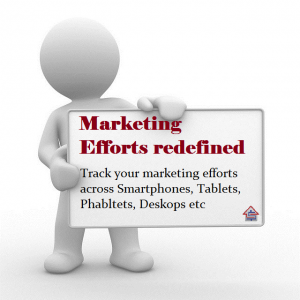
Loading...
Are you, Your family, and Your home pet ready?
 Pets are lifelong partners that bestow you with unconditional love and they are absolutely like adding a new family member. Hence, quizzing yourself and your family with some easy questions can resolve this perplexing query of whether it’s time to get a furry feather companion
Pets are lifelong partners that bestow you with unconditional love and they are absolutely like adding a new family member. Hence, quizzing yourself and your family with some easy questions can resolve this perplexing query of whether it’s time to get a furry feather companion
- What are your comfort zones?
- How time-tied are you?
- Does your finance allow those vet-visits, accessories, etc
- Is it okay to be messy , pets are messy by nature
Google Analytics – Event Tracking
 Once a website is up and running, the next logical step is to analyse its performance based on user engagement to determine, if the website (virtual presence) has actually resulted in conversions (Business opportunities, new clients). There comes a time when the conversion rate might have reached a plateau, or a new campaign has failed to result in desired conversion rate? Basic reports may not provide the much needed insights.Enter Google Analytics- Event Tracking.
Once a website is up and running, the next logical step is to analyse its performance based on user engagement to determine, if the website (virtual presence) has actually resulted in conversions (Business opportunities, new clients). There comes a time when the conversion rate might have reached a plateau, or a new campaign has failed to result in desired conversion rate? Basic reports may not provide the much needed insights.Enter Google Analytics- Event Tracking.
Resume Revolution: Exploring VisualCV
 Curriculum vitae (CV): A short account of one’s career and qualifications prepared typically by an applicant for a position. (Merriam-Webster Online)
Curriculum vitae (CV): A short account of one’s career and qualifications prepared typically by an applicant for a position. (Merriam-Webster Online)
A Curriculum Vitae , CV, or Resume is most definitely the job-seeker’s gate pass to establish contact within a company
With the internet gaining importance in all facets of life, paper resumes evolved into Word documents. Companies began to accept resume submissions via email, provided they were submitted in Word format.
This allowed the candidates to follow up on their interview status and other verification queries without having to rely on the mail-man ,postal delays, or make multiple trips to the company, especially if the company and the candidates are not located in the same place. Continue reading “Resume Revolution: Exploring VisualCV”
6th Sense Technology – நாம் சுவாசிக்கும் உலகை டிஜிட்டல் உலகுடன் இணைக்கும் ஆறாம்-அறிவின் தொழில்நுட்பம்
 பஞ்சபூதம் என்று நீர், நிலம், நெருப்பு, காற்று, ஆகாயம் போன்றவையை குறிப்பிடுகிறோம். இவைகளைப் போலவே நம்முள் இயங்கும் சுவைக்கும் நாக்கு, நுகரும் மூக்கு, பார்க்கும் கண்கள், கேட்கும் காதுகள், உணரும் சருமம் போன்றவைகளை பஞ்சேந்திரியங்கள் என்று சொல்கிறோம். ஒவ்வொருவரின் பஞ்சேந்திரியங்களும் அவற்றைச் சுற்றி இருக்கும் பஞ்சபூதங்களுடன் இயைந்து செயல்படுகின்றன. நம் அன்றாட வாழ்வின் சம்பவங்களும் இவற்றின் விளைவுகளே என்பதும் மறுக்க முடியாத உண்மை. பஞ்சேந்திரியம், பஞ்சபூதம் என்று ஆன்மீகச் சொற்ப்பொழிவுகளில் பரவலாகப் பயன்படுத்தபடும் சொற்கள்(கணனி) தொழில்நுட்பப் பகுதியில் ஏன் இடம்பெற்றுள்ளது என்று நீங்கள் குழம்பிப்போயிருந்தால் வியப்புஇல்லை .
பஞ்சபூதம் என்று நீர், நிலம், நெருப்பு, காற்று, ஆகாயம் போன்றவையை குறிப்பிடுகிறோம். இவைகளைப் போலவே நம்முள் இயங்கும் சுவைக்கும் நாக்கு, நுகரும் மூக்கு, பார்க்கும் கண்கள், கேட்கும் காதுகள், உணரும் சருமம் போன்றவைகளை பஞ்சேந்திரியங்கள் என்று சொல்கிறோம். ஒவ்வொருவரின் பஞ்சேந்திரியங்களும் அவற்றைச் சுற்றி இருக்கும் பஞ்சபூதங்களுடன் இயைந்து செயல்படுகின்றன. நம் அன்றாட வாழ்வின் சம்பவங்களும் இவற்றின் விளைவுகளே என்பதும் மறுக்க முடியாத உண்மை. பஞ்சேந்திரியம், பஞ்சபூதம் என்று ஆன்மீகச் சொற்ப்பொழிவுகளில் பரவலாகப் பயன்படுத்தபடும் சொற்கள்(கணனி) தொழில்நுட்பப் பகுதியில் ஏன் இடம்பெற்றுள்ளது என்று நீங்கள் குழம்பிப்போயிருந்தால் வியப்புஇல்லை .
இந்நாள் வரை கணனியம் (Computing.. not necessarily directly refer to computer) சார்ந்த எல்லாச் செயல்பாடுகள் நடைபெறும் டிஜிட்டல் உலகும், நாம் சுவாசிக்கும் (அதாவது பஞ்சேந்திரியங்களுடன் உறவாடும்) “நிஜ” உலகும் தனிதனியே இயங்குகின்றன. டிஜிட்டல் முறையில் தகவல்களை (கணனி)திரையிலும், அன்றாட வாழ்வில் காகிதங்களிலும், நாம் பார்க்கும் காட்சிகளிலும், படிக்கும் புத்தகங்களிலும், ஸ்பரிசிக்கும் பொருட்களிலும் தகவல்கள் குவிந்துகிடக்கின்றன. இவ்விரு உலகிற்கும் இடைவெளி நாளுக்கு நாள் குறைந்துகொண்டு தான் வருகிறது. Pocket PC / Blackberry / iPhone போன்றவை தற்போதைய உதாரணங்கள்.
இவ்விரு உலகின் இடைவெளியை இன்னும் குறுகச்செய்கிறது பிரணவ் மிஸ்திரியின் ஆறாம்-அறிவு தொழில்நுட்பம் (6th sense Technology). மனிதன் என்றைக்குமே நம்மை சுற்றி என்ன நடக்கிறது என்பதை உணர்வது மட்டும் அல்லாமல், இந்த உணர்வின் அடிப்படையில் சில முடிவுகளையும் எடுக்கிறான். எந்நேரமும் கணனி முன்னால் இருந்தால் நமக்கே உரிய உணரும் திறனை மெல்ல மெல்ல இழக்க நேரிடுகிறது. கணனியை விட்டு காலார நடந்து வரலாம் என்று பூங்காவிற்குப் போனால், அடடா எவ்வளவு ரம்யமான காட்சி, டிஜிடல் கேமராவில் பதிவு செய்யலாமே என்ற எண்ணம் தோன்றிய கணமே, அதே காட்சியை உணர்ந்து ரசிப்பதை விடுத்து டிஜிட்டல் உலகில் நுழைந்துவிடுகிறான். ஆனால் அதே காட்சியை பாரதிராஜா மாதிரி கட்டம் கட்டி, கைகளை சொடுக்கினாலே படம் எடுக்கலாம் (கேமராவை வெளியே எடுக்காமல்) என்பது இந்த 6th sense technology யின் சிறிய உதாரணமே. Continue reading “6th Sense Technology – நாம் சுவாசிக்கும் உலகை டிஜிட்டல் உலகுடன் இணைக்கும் ஆறாம்-அறிவின் தொழில்நுட்பம்”
உள்ளங்கையில் உலகம் – கைப்பேசியில் இணையம்
 தொழில்நுட்பம் வளர வளர, நம் “தேவை”களும் நாளுக்கு நாள் அதிகரித்துக்கொண்டே வருகிறது. குளிர்சாதனப் பெட்டியும், தொலைக்காட்சிப் பெட்டியும் “வசதி உள்ளவர்கள்” வாங்கும் பொருட்களாக இல்லாமல், ” அத்யாவசியம்” என்ற வட்டத்துக்குள் வந்துவிட்டது. வீட்டுக்கு ஒரு தொலைபேசி அவசியம் என்றிருந்த காலம் மாறி ஒவ்வொருவருக்கும் கைப்பேசி அவசியம் என்பதும் ‘நாம் வாழும் இந்த’ காலத்தின் கட்டாயமே என்பதில் மாற்று கருத்து இருக்க வாய்ப்பில்லை. இதே வழக்கில் பார்த்தோமேயானால், இணையத்தொடர்பும் நம் வாழ்க்கை முறையும் பின்னி-பிணைந்து உள்ளது. இணையமும் – கைப்பேசியும் இல்லாமல் மக்கள் வாழ்க்கை நடத்தவில்லையா என்று கேட்டால், நாம் அதாவது தனிநபரான நீங்களும் நானும் அந்த வட்டத்துக்குள் இல்லை என்ற எண்ணம் தான் எழுகிறது.
தொழில்நுட்பம் வளர வளர, நம் “தேவை”களும் நாளுக்கு நாள் அதிகரித்துக்கொண்டே வருகிறது. குளிர்சாதனப் பெட்டியும், தொலைக்காட்சிப் பெட்டியும் “வசதி உள்ளவர்கள்” வாங்கும் பொருட்களாக இல்லாமல், ” அத்யாவசியம்” என்ற வட்டத்துக்குள் வந்துவிட்டது. வீட்டுக்கு ஒரு தொலைபேசி அவசியம் என்றிருந்த காலம் மாறி ஒவ்வொருவருக்கும் கைப்பேசி அவசியம் என்பதும் ‘நாம் வாழும் இந்த’ காலத்தின் கட்டாயமே என்பதில் மாற்று கருத்து இருக்க வாய்ப்பில்லை. இதே வழக்கில் பார்த்தோமேயானால், இணையத்தொடர்பும் நம் வாழ்க்கை முறையும் பின்னி-பிணைந்து உள்ளது. இணையமும் – கைப்பேசியும் இல்லாமல் மக்கள் வாழ்க்கை நடத்தவில்லையா என்று கேட்டால், நாம் அதாவது தனிநபரான நீங்களும் நானும் அந்த வட்டத்துக்குள் இல்லை என்ற எண்ணம் தான் எழுகிறது.10 வருடங்களுக்கு முன்பாக, வீட்டில் இணையத் தொடர்பை நிறுவ நிறைய யோசித்தோம். அப்பொழுதெல்லாம் வீட்டில் கணனி வாங்குவதே விரயம் என்று பலர் எண்ணினார்கள். ஆனால் இன்று அப்படி இல்லை. பரிணாம வளர்ச்சி இப்படி இருக்க, இணையத்தொடர்பு நம் வாழ்வில் தவிர்க்க முடியாத ஒன்றாகிவிட்டது. ஆங்கிலத்தில் Necessary Evil என்று சொல்லவது இணையத்தொடர்புக்கு மிகச்சரியாக பொருந்தும். தகவல் பரிமாற்ற துறையில் இருப்பவர்கள் இதன் வீர்யத்தை நன்கு அறிவார்கள். இது ஒரு புறம் இருக்க, இணையத்தொடர்பை நிறுவுவது முன்பை விட இன்று மலிவாகத் தான் உள்ளது. நாளுக்கு நாள் இணையப் பயணர்களின் எண்ணிக்கை அதிகரித்து வருவதற்கும் இதுவே காரணமாக்கூட இருக்கலாம்.
அன்றாட வாழ்வில் நாம் பயன்படுத்தும் மின்னணுவியல் சாதனங்களில் கணனியும் கைப்பேசியும் முக்கிய பங்கு வகிக்கின்றன. இதில் ஒன்று இல்லை என்றாலும், பல அலுவல்கள் பாதிக்கப்படுவதை நாம் உணர்ந்திருக்கிறோம். இம்மாதிரி நேரங்களில் தான் கைப்பேசியில் இணையதளங்களை பார்வையிடுவதைக் குறித்து பத்திரிகைகளிலும், நாளிதழ்களிலும் வரும் விளம்பரங்கள் நம் கவனத்தை ஈர்க்கின்றன. இது நடைமுறைக்கு சரிவருமா? அப்படியானால் ‘என் கைப்பேசியில் இதை எவ்வாறு பயன்பாட்டு நிலையில் வைப்பது” போன்ற கேள்விகளுக்கு பதில் தேடுவது தான் இப்பதிவின் நோக்கம்.
கணனியில் இணையத்தொடர்பை ஏற்படுத்த வேண்டும் என்றால், முதலில் நாம் ISP என்று சொல்லப்படும் Internet Service Provider களை கண்டறிந்து சந்தா விவரங்களை தெரிந்துகொள்வோம். உதா:- DataOne, BSNL, Sify போன்றவை. பிறகு இவற்றில் நமக்கு உகந்ததை தேர்வு செய்து, அந்த குறிப்பிட்ட ISP அலுவலகத்தில் விண்ணப்பத்தை குடுத்து, சந்தா தொகையையும் கட்டிவிட்டால், சில தினங்களில் கணனியில் இணையத்தொடர்பை ஏற்படுத்திவிடலாம்.
கைப்பேசியில் இணையத்தொடர்பை ஏற்படுத்த வேண்டும் என்றால், சில விவரங்களை தெரிந்துகொள்ள வேண்டும். முக்கியமாக, “என்னிடம் Wireless Modem உள்ளது. இதை பயன்படுத்திதான் நான் மடிகணனியில் இணையத்தொடர்பு ஏற்படுத்துகிறேன். ஆகவே, இதே wireless modem த்தை பயன்படுத்தி என் கைப்பேசியிலிருது இணையத்தொடர்பை ஏற்படுத்த முடியுமா?” என்றால் கண்டிப்பாக முடியாது. Modem தான் இணையத்தொடர்பை ஏற்படுத்தும் மூலாதாரம் என்றாலும், கணனி வேறு, கைப்பேசி வேறு. Chalk peice பயன்படுத்தி Slate இல் எழுதலாம், நோட்டுப்புத்தகத்தில் எழுத முடியுமா? நோட்டுபுத்தகத்தில் எழுத பேனா / பென்சில் தான் உகந்தது. கணனியில் பயன்படுத்தும் இணையத்திற்கும், கைப்பேசியில் பயன்படுத்தும் இணையத்திற்கும் இது தான் வித்தியாசம்.
அப்படி என்றால், கைப்பேசியில் எவ்வாறு இணையத்தொடர்பை ஏற்படுத்துவது?. இதற்கான குறிப்புகள் சில.
- Mobile phone model : –
நீங்கள் பயன்படுத்தும் கைப்பேசியில, இணைய பயன்பாட்டுக்கான சாதனங்கள் உள்ளதா என்று தெரிந்துகொள்ளுக்கள். உதா:- கைப்பேசியில் உலாவி / கோப்புகளை படிக்கவும் மற்றும் தரவிறக்கம் – வலையேற்றுவதற்கான வசதி போன்றவை. - Mobile Service Provider :-
நீங்கள் சந்தாதாரராக இருக்கும் Mobile Service Provider (Airtel, Hutch, vodafone) இடம், கைப்பேசியில் இணையத்தொடர்பை ஏற்படுத்தும் அம்சங்கள் உள்ளதா என்று விவரமாக கேட்டு தெரிந்துக்கொள்ளுங்கள். முடிந்தால், நேரில் போய் விசாரிப்பது நல்லது. பல விஷயங்கள் தெரிந்துக் கொள்ளலாம். - சந்தா விவரங்கள்
அடுத்தது, இணையத்தொடர்புக்கான தனிப்பட்ட சந்தா விவரங்களை அவர்களிடம் கேட்டு பெற்றுக்கொள்ளுங்கள். சில Mobile Service providers, மாதம்/ வாரம் / தினத்திற்கென்று ஒரு தொகை வைத்திருப்பார்கள். நீங்கள் கைப்பேசியில் இணையத்தை பயன்படுத்தினாலும், இல்லை என்றாலும், இந்த குறிப்பிட்ட தொகை உங்கள் கணக்கில் இருந்து எடுத்துக்கொள்ளப்படும். வேறு சில Mobile Service Providers, பயன்பாட்டுக்கு ஏற்ப தொகை செலுத்தினால் போதும் போன்ற திட்டங்களையும் வைத்திருப்பார்கள். ஆகவே அவசரப்படாமல், நிதானமாக எல்லாவற்றையும் கேட்டு, புரிந்துக கொண்டு உங்களுக்கு சரியாக தோன்றும் திட்டத்தை தேர்வு செய்யுங்கள். - Data Download Charges :-
கைப்பேசியில் இணையத்தை பயன்படுத்த மாத சந்தா என்ற தொகையை கட்டினாலும், இணையப்பயன்பாட்டில் இருக்கும் பொழுது, உலாவியில் தரவிறக்கப்படும் பக்கங்களின் அளவை சார்ந்திருக்கும் தொகையை தான் Data Download charges என்று சொல்வார்கள்.உதா:- உங்கள் கைப்பேசியில் இணையத்தொடர்புக்கான மாதச்சந்தா 500/- என்று வைத்துக்கொள்வோம். இணையத்தொடர்பு தான் கிடைத்துவிட்டதே! சும்மா இருக்கும் நேரம் எல்லாம் கிரிக்கெட் ஸ்கோர் பார்க்கிறேன், வலைத்தளங்களை பார்வையிடுகிறேன் என்று தினம் 2-3 மணி நேரம் செலவு செய்கிறீர்கள் என்று வைத்துக்கொள்வோம். இந்த 3 மணி நேரத்தில், நீங்கள் பார்வையிட்டிருக்கும் பக்கங்களின் அளவை பொறுத்து Data Download Charges என்றொரு தொகை கணக்கிடப்படும். மாத கடைசியில் இணயத்தொடர்பு சந்தா 500/ மற்றும் Data Download Chareges 1000/- என்றும் பில் வரும்.ஆகவே நீங்கள் தேர்வு செய்திருக்கும் Mobile Service provider இடம், அவர்களின் திட்டத்தில் data download charges உண்டா? அப்படி உண்டு என்றால் அதன் விவரங்கள் போன்றவற்றை தெளிவாக தெரிந்து கொள்ளுங்கள். கைப்பேசியில் இணையத்திலிருந்து பாட்டு / படங்கள் போன்றவற்றை தரவிறக்கம் செய்பவர்களுக்கு இந்த Data Download Charges கூரையை தொடும் அளவிற்கு இருக்கும் என்று நண்பர்கள் சொல்லக் கேட்டிருக்கிறேன்
இவை அனைத்தையும் மனதில் பதியவைத்து உங்கள் Mobile Service Provider ஐ அணுகி விவரங்கள் சேகரித்து நன்கு ஆராய்ந்த பிறகே கைப்பேசியில் இணையத்தொடர்பை ஏற்படுத்தவேண்டும் என்பதையே பரிந்துரைக்கிறோம்.
கைப்பேசியில் இணையத்தொடர்பை ஏற்படுத்த முடியுமா? என்றால் முடியும். “கைப்பேசியில் இணையம் தேவை தானா?” என்ற கேள்விக்கு பதில் சொல்ல உங்களால் மட்டும் தான் முடியும். இணையத்தில் எவ்வளவு நேரம் செலவிடுகிறீர்கள் என்று கணக்கிட துவங்குங்கள், விடை தானாகவே கிடைத்துவிடும்.
— தீபா கோவிந்த்


